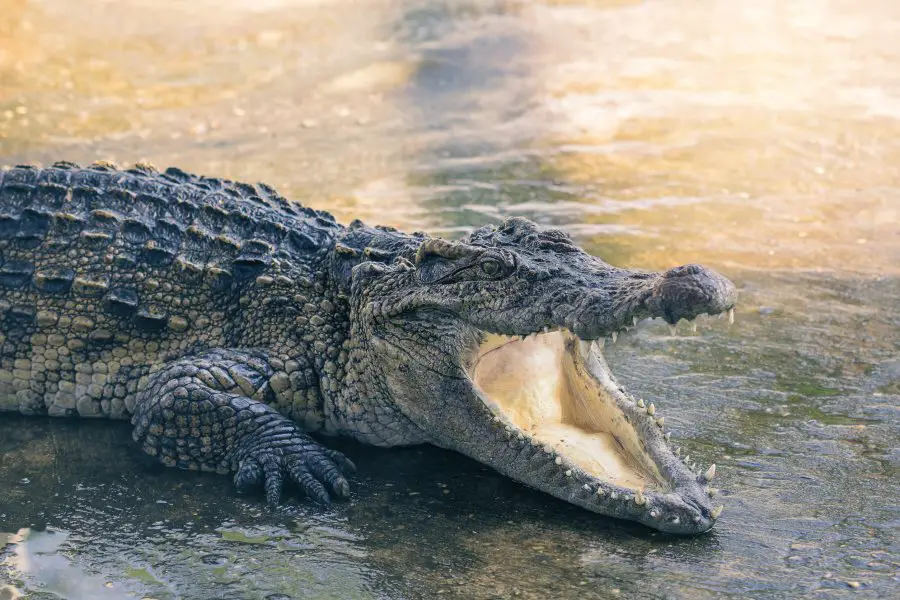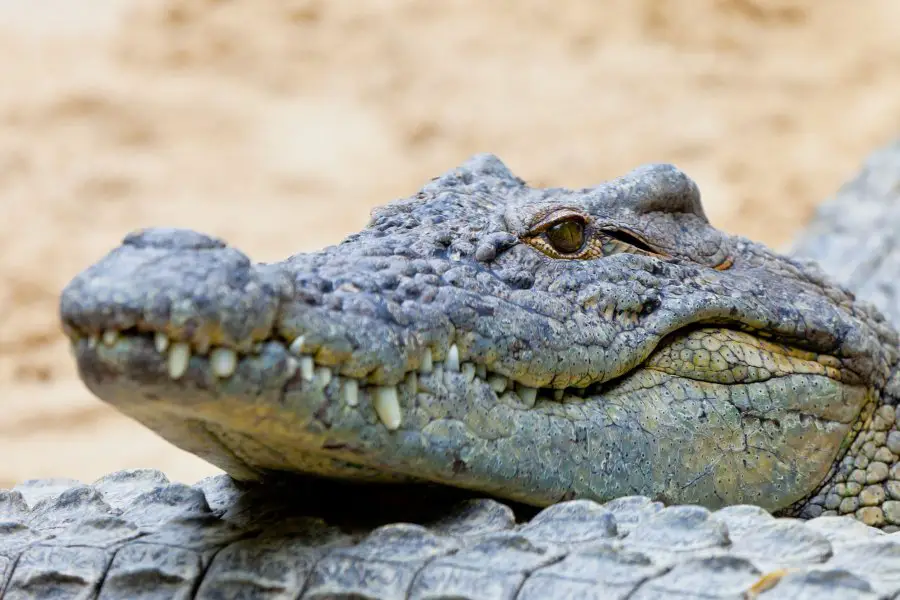Study Explains Why Crocodiles Today Look The Same As They Did 200 Million years Ago
Tags: opinion

The evolution of crocodiles has not seen much of a change for the past 200 million years.
“Living Fossils” is one of the best ways to describe a crocodile. They move slowly, are covered in scales, and are cold. Hence, the appearance is pretty close to that of a dinosaur. And thus, the above name seems much more fitting than it may sound. This comparison of crocodilians from the past and now has a truthful element. That they surprisingly look like crocodiles from our time.
But the question is, why did crocodiles, caimans, or even alligators change so little in such a long period? The latest researches have managed to explain the evolution of crocodiles. For this, they have used advanced evolutionary modeling.
The crocodiles’ relatives have survived since the earliest Jurassic age. Researchers have found fossil remains of these ancestors in ancient rocks. Those rocks rank way back by 200 million years. What is strange here is the similarities in their looks from these absolutely different eras— the Jurassic to the present, modern.
The modern crocodile has armored skin, powerful tails, a sprawling gait, and long, long snouts. The forms of the fossils found indicate remarkably similar traits. And hence, the forms of these crocodilians seem very closely similar. And complicates the evolution of crocodiles further.
READ: FOOTAGE SHOWS CROCODILES SKINNED FOR LOUIS VUITTON LEATHER BAGS
Why Is The Evolution Of Crocodiles Unusual?
Compared to the amount of diversity of other animals of the modern era, this change that lacks in the evolution of crocodiles is too unusual. Especially when one considers that in such a short time, other animals have changed and diversified even more.
We can take birds as the best example. The first birds ever, or called ‘true birds,’ were claimed to appear more than a million years later compared to crocodilians. Here, birds, in a shorter span, have recorded over 10,000 species ever since. This ranges from Ostriches to Hummingbirds, Owls, etc.
The math here differs vastly. Because the entire evolution of crocodiles has only recorded 25 species. The only variation between them is their skull shape. Other than that, they all look close. This lack of diversity in modern crocodiles is challenging. Because, as per fossil records, unfamiliar and exotic crocodilians exist.

Differing Between Crocodilians
The evolution of crocodiles is an unusual one. With 24 alive species today, we categorize modern ones with their distinctive features. Like there are fast runners. Some of them are bipeds and even herbivores. A couple of them are also ocean-swimmers, while some are burrowers.
People have developed unique evolutionary models to analyze this lack of change. With this, the body size of the crocodile taken from fossils will be compared. Using this, mixed with every species’ evolutionary relationships, will help indicate the change of body sizes. Then we can mingle this data with the crocodile’s fossil’s dates. Thus, we get a measure to know the body size change per unit time. Or the crocodile’s evolutionary rate.
We can now measure, thanks to the above calculations, every species of the rate of evolution of crocodiles for further understanding. Scientists have revealed how the evolution of crocodiles takes place. Most of these species had a slow pace of change. But there were some crocodiles that had a relatively fast evolution.
The Stop-Start Evolution Of Crocodiles
The crocodile species that evolved rapidly did not appear independently. The warmer the climate was, the more they came together. The crocodiles, with a rapid evolutionary rate than other species, came after severe changes in climate. This sudden burst in a slow evolutionary pattern is called ‘punctuated equilibrium.’ The situation is common when species evolve on the basis of external forces. This includes climate change or even mass extinctions.
Punctuated equilibrium simply means that certain organisms find a specific state in which they remain for a long time. They do this until the external environment forces their beings to adapt to the new conditions. This pattern is called stop-start. No one has yet cleared why a handful of animals follow this pattern and others don’t.
READ: LACOSTE REPLACED ICONIC CROCODILE LOGO WITH 10 ENDANGERED SPECIES TO RAISE AWARENESS
Other factors may also play a role in this. Modern crocodiles can not have their body temperature under control. Thus, they seem much more sensitive to climate change in comparison to any bird or mammal. But there is a catch. Modern crocodiles can survive much longer with no food. This makes them resilient in contrast, especially in hard times.
Conclusion Of The Research
What the research has managed to tell us is that the punctuated equilibrium model is the primary factor in the evolution of crocodiles. It suggests that crocodiles have come to a state of equilibrium. Hence, they do not need to change too often. When the crocodilian family does change at a certain pace, we can point at the change in the climate. This means they are forced to adapt to their changing environment.
This helps in explaining how the unusual kin in crocodilians is now extinct. Temperature seems like the primary force of not changing. But other factors could also be at play. Thus, the research does not end here.
Next, experiments over how the evolution of crocodiles has been affected by body size interactions will be taking place. Like rainfalls and sea levels, several other external, environmental factors will also be considered. Further experiments will also include other features, other than the size of bodies, to understand the patterns in punctuated equilibrium. These features may also consider the shape and size of the crocodilians’ skulls.
Image credit: Chitsanupong Katip & David Acosta Allely

Leave Comment: